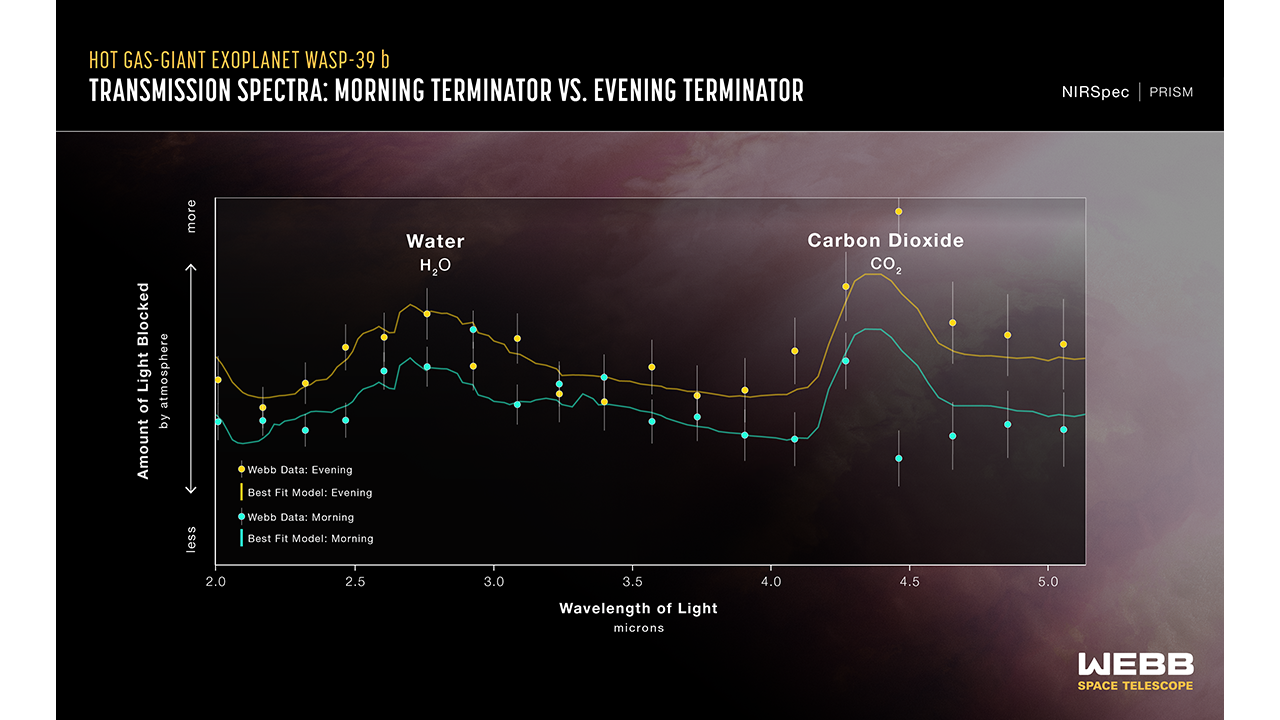Thanks to the James Webb Space Telescope (JWST), scientists have confirmed what theoretical models had previously predicted. Tidally trapped exoplanets have differences between their atmospheres in the zone of eternal morning and the zone of eternal evening.

Scientists have chosen the exoplanet WASP-39 b as an object for study. This is a gas giant orbiting a yellow dwarf located at a distance of about 700 light-years from Earth. Its mass is about 0.28 times and its radius is 1.27 times larger than the mass and radius of Jupiter. Since the planet’s orbit passes at a distance of only 7 million kilometers from the star, its atmosphere is heated to a temperature of about 900 °C on the daytime side.
Another consequence of this proximity is that WASP-39 b is in a tidal entrainment. This means that one side of this planet is constantly illuminated by the star, while the other is shrouded in darkness. WASP-39 b also has areas of eternal sunrise and eternal sunset.
Due to the fact that the atmosphere of WASP-39 b is bloated and its various layers are clearly visible, it is a very convenient target for studying with JWST. Previously, the telescope has already detected carbon dioxide, sulfur dioxide, water vapor, and sodium in its gas envelope. Now it has confirmed the long-held assumption of temperature differences between different zones of its atmosphere.
Measurements made with the NIRSpec spectrograph showed that the evening part of WASP-39 b is hotter than the morning part by about 200 °C. They also found evidence of differences in cloud cover. The zone of perpetual sunrises is most likely cloudier than the zone of perpetual sunsets.

This difference is due to the peculiarities of atmospheric circulation on tidally trapped worlds. The hotter gas from the day side moves through the evening to the night side due to the powerful equatorial jet stream. There it cools down and enters the morning side. As a result, the dawn side of WASP-39 b is colder than the sunset side. The large temperature difference also leads to high wind speeds. Scientists estimate that the speed of atmospheric flows at WASP-39 b can reach 1600 km/h.
Now the researchers intend to use the same analysis method to study the atmospheres of other hot Jupiters. JWST will also be involved in them.
Based on NASA materials

